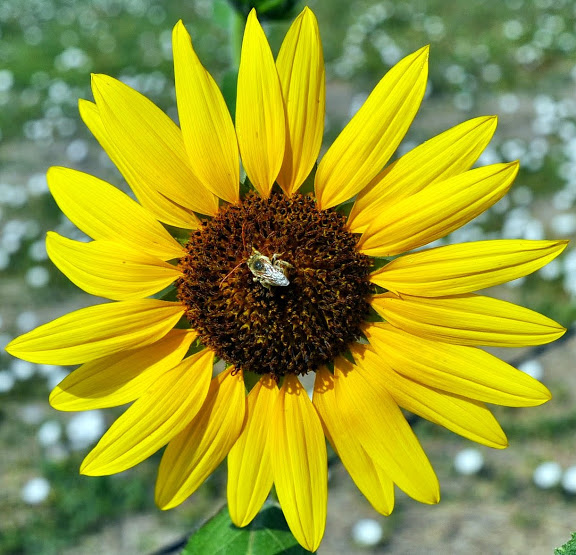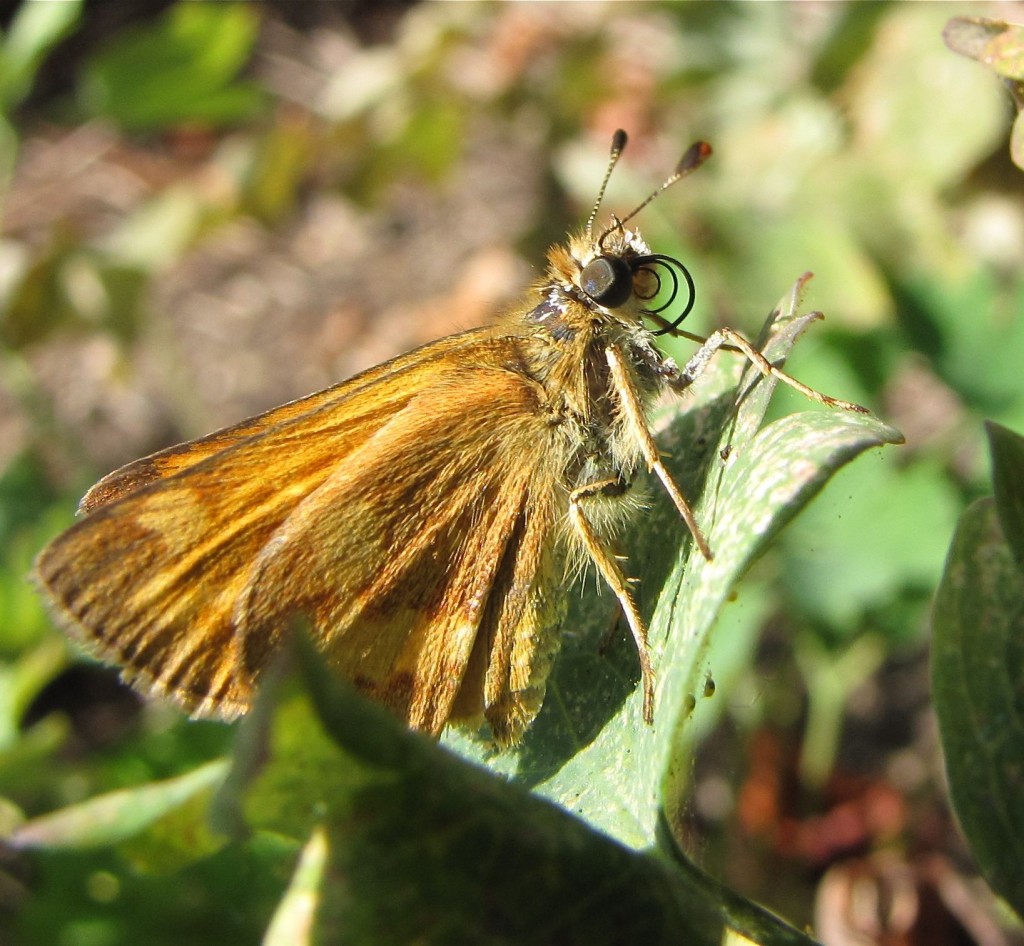
Honeybees and butterflies are two of the pollinators you can find easily in the Children’s Garden on sunny, warm days, but if you look closely at any flower patch, you might also see bumblebees, green flower bees, carpenter bees, orchard mason bees, or tiny black bees only as big as a grain of rice, all drinking and gathering pollen and nectar there! You might even see Ladybugs and Soldier Beetles, who need to drink nectar too and are considered “accidental pollinators”!

Did you notice that the Children’s Garden Pollinator Garden is shaped like a giant butterfly? All the plants inside this garden have flowers that feed bees or adult butterflies with their nectar, or leaves that caterpillars love to munch. We don’t mind seeing chewed leaves in the Children’s Garden when it’s a caterpillar having lunch!
To keep you and the bees happy, follow these “Bee Safe” rules:
- Don’t get between a bee and its lunch! Bees don’t mind if we watch them eat, but they get upset if we get between them and their flowers! Wouldn’t you get upset too, if someone huge stood between you and your lunch, and wouldn’t let you eat it?
- Don’t Wave Your Hands in the Air Like a Great Big Bear! Who is bigger, you or a bee? If you act like a big bear, bees will get scared! They only have one weapon to use if they think a bear is attacking them- if you were scared, do you think you might use your only weapon too?
- Don’t Bee a Flower (Take Two Steps Back)! Are you wearing clothes that are the same color as a flower? Bees don’t see shapes as well as they see bright flower colors, and might come close to check you out for a little while. They’ll figure out pretty quickly that you don’t have any nectar and pollen, and they will go find a real flower. But when you take two steps back, you will help them figure it out super fast because flowers can’t walk!
Here’s a copy of the Bee Safe rules that you can decorate, and another one that has a Bee Song on it:
Did you know that honeybees communicate with each other by doing a special dance? They have two different dances you can learn to do!
Would you like to make your own Bumblebee ID guide?
Here’s a great guide from the Seattle P-Patch Program about how to create good bumblebee habitat in your own yard:
Here’s a cool factsheet from WSU, whose author did a lot of his research at the Magnuson Community Garden. It contains information about a citizen science project you can join, and links to many great pollinator websites:

Skippers are small,
fuzzy butterflies that
sometimes get mistaken
for a moth. One way to
tell the difference is
that all butterflies have
a little round "knob" on
the tip of their
antennae, and moths
have a feathery or
comb-like tip.
Here’s a fun factsheet about these fantastic flyers:
Want to make a puddling pond for butterflies, and learn a butterfly song?
Would you like to add butterfly plants to your garden? Here’s a list of the plants that PNW butterflies like the best:
Would you like to learn to identify the butterflies you see?
Butterflies and moths are hardier than you think! The Mourning Cloak Butterfly can squeeze itself into cracks in tree bark to survive all winter, and there is moth that even lives all the way up in the Arctic! This article about it will amaze everyone in the whole family:
Keep your “eagle eyes” out for Ladybugs and Soldier Beetles on the flowers too!
